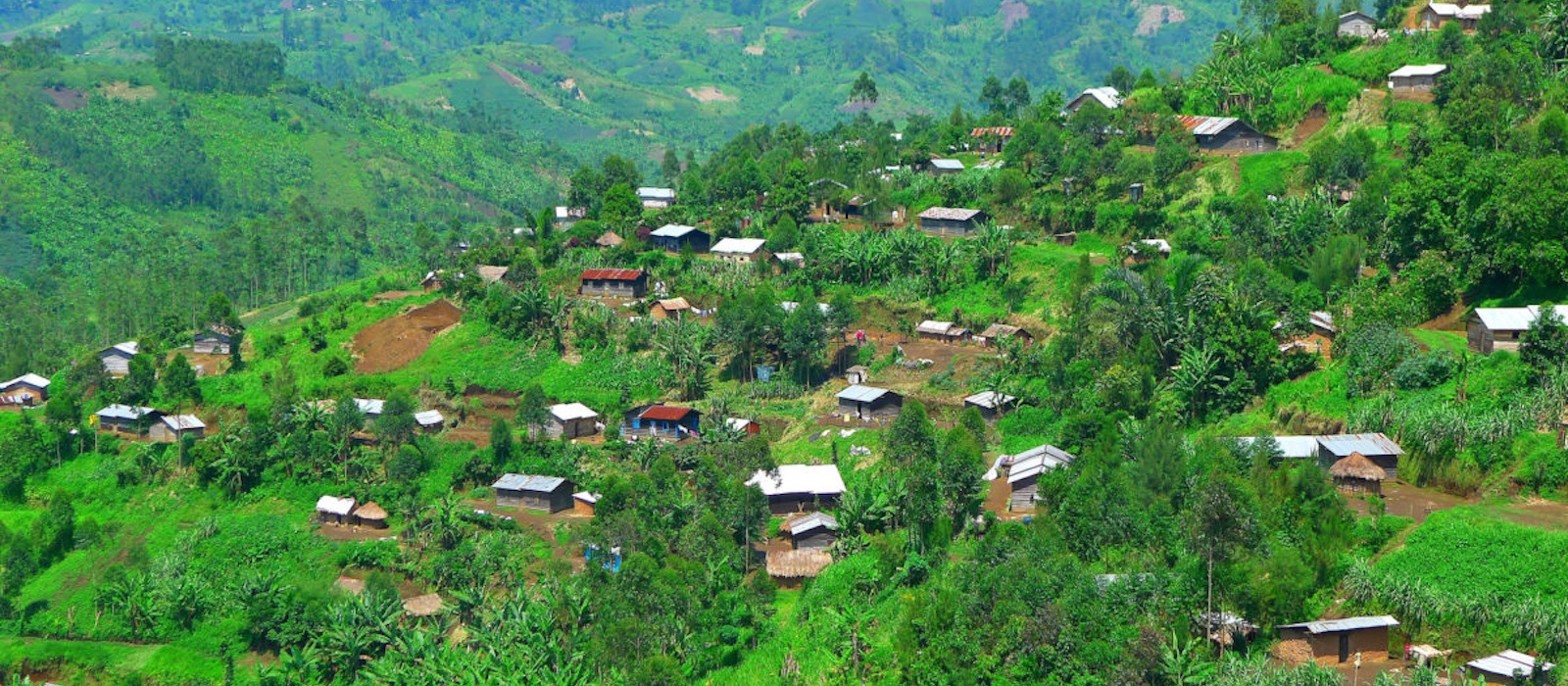Cash Transfer Evaluation in the Democratic Republic of the Congo

A village in the DRC. Credit: Teseum
Study Context
Comparing a costly program to a counterfactual of no program may not be an adequate way of assessing whether that was the best use of the money. Given the very large evidence base showing the effectiveness of cash transfers as well as their simplicity and low administrative cost, they form a natural ‘standard of care’ to which other programs can be compared. Led by Jeremy Magruder (and previously by Raul Sanchez de la Sierra) in partnership with USAID and GiveDirectly researchers are currently designing an RCT to develop estimates of the cost effectiveness of digital cash transfers of multiple sizes on a wide range of development outcomes relevant to USAID in the Democratic Republic of the Congo. This impact may be compared to current and future USAID programming in the DRC. Researchers compared cash to the impact of an Integrated Youth Development Activity (IYDA) led by Educational Development Center (EDC) and its partner Catholic Relief Services (CRS).
Study Design
The IYDA program is called Pathway Zero (P0) and takes place in villages within the territory of Walungu, where youth have less access to non-formal learning pathways, including technical and professional training. The package of activities consists of support and training activities to help youth create Savings and Internal Lending Communities (or SILC groups), develop entrepreneurial knowledge, and start income-generating activities. Pathway zero graduates received a $100 cash transfer to support the implementation of their business plan and/or invest in their SILC groups.
To examine whether P0 activities may be enhanced when combined with larger cash transfers, and whether the effectiveness of cash transfers is enhanced if savings groups are also formed, a subset of villages in the territory will also received unconditional cash transfers, disbursed by GiveDirectly. For those in this subset, the total cash amount to be transferred will be $750 USD in monthly payments of $250 USD.
Another subset of communities were randomly selected into receiving cash transfers disbursed by GiveDirectly in avenues within Goma, the capital city of North Kivu Province. Two different transfer amounts were randomized ($500 USD; $1000 USD). Eligible beneficiaries received monthly payments in tranches of $250 USD, until the total transfer amount is reached.
In Goma, outcomes were measured via an in-person endline as well as a high frequency phone survey on a subset of respondents. In Walungu, outcomes were measured via a short in-person midline and more extensive endline. Evaluation focused on three categories of outcomes: indicators for whether the program was successfully implemented, economic outcomes including work and consumption outcomes, and resilience outcomes, including adaptive capacity and absorptive capacity. Secondary outcomes included indicators related to financial transfers, conflict and crime, depression, well-being, and trust, general equilibrium effects on prices, transformational capacity, and ability to respond to a volcanic eruption that forced evacuations in Goma. Researchers also separately examined effects for women.
Results and Policy Lessons
In Walungu, researchers uncovered a clear pattern of treatment effects related to receiving cash transfers plus Pathway 0. In the short run, youth in these villages reported an increase in food security, were more likely to operate a business, and had more business assets. Youth also faced a reduction in adaptive capacity, primarily observed through their sense of agency (both in terms of the degree of control they have over household financial decisions and more generally over important events in the world). In the medium run, researchers observed that youth who receive cash reduce their outstanding debts, withdraw from village transfer networks, and retain their sense of lost agency. Young women in these villages engage in more entrepreneurial activity and have more business assets in the medium run.
In Goma, medium-run effects of cash are suggestive but modest. There is some evidence that entrepreneurship and business assets increased in response to large cash transfers, and also that crime and conflict decreases. Researchers also observed suggestive evidence that food security improved during the evacuation period, particularly for children in the household. However, we only have a subsample to evaluate effects during the period when the volcanic eruption occurred weakening statistical power to detect effects. There were larger gaps between treatment assignment and reported receipt in Goma, likely due to differences in survey and implementation timing because of COVID. These differences in timing, in addition to the lack of short-run data in Goma (also an effect of COVID) may explain the differences in results from Walungu.

